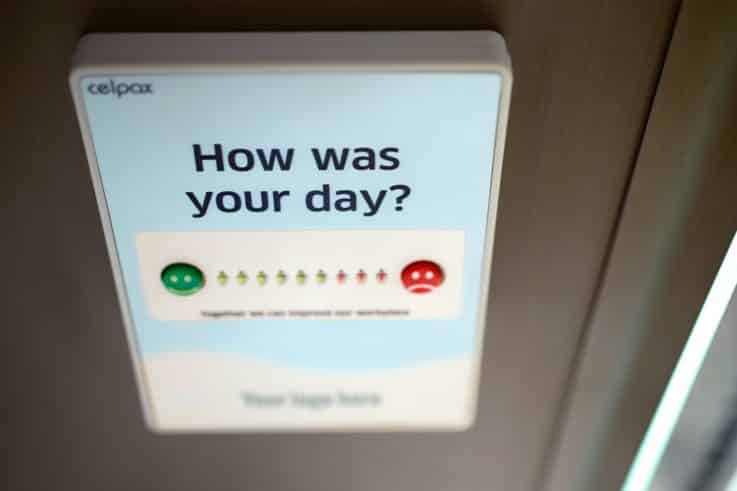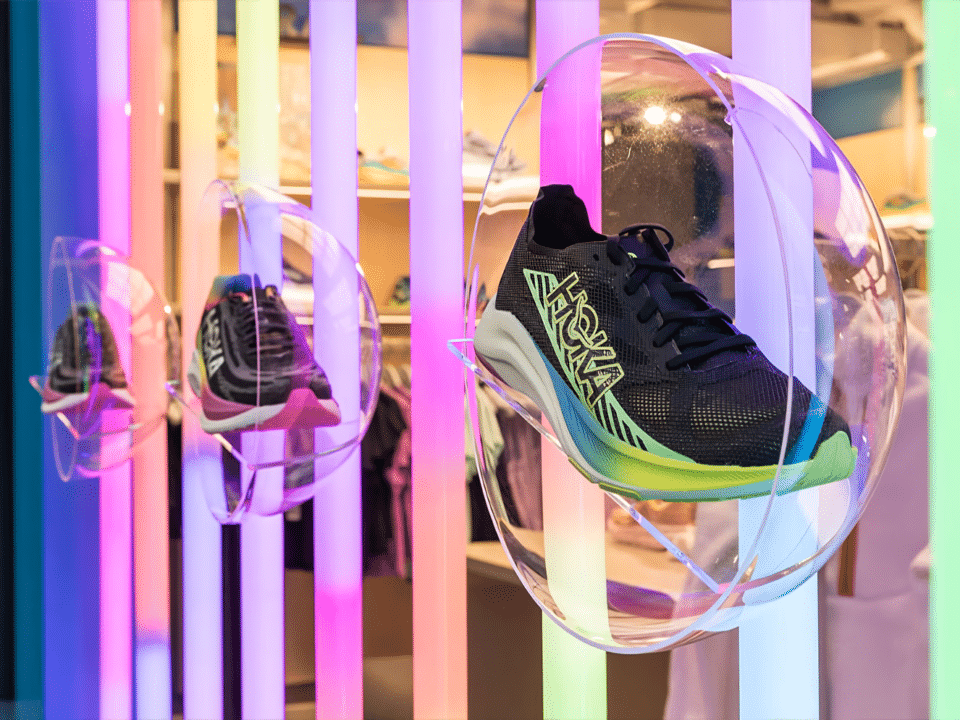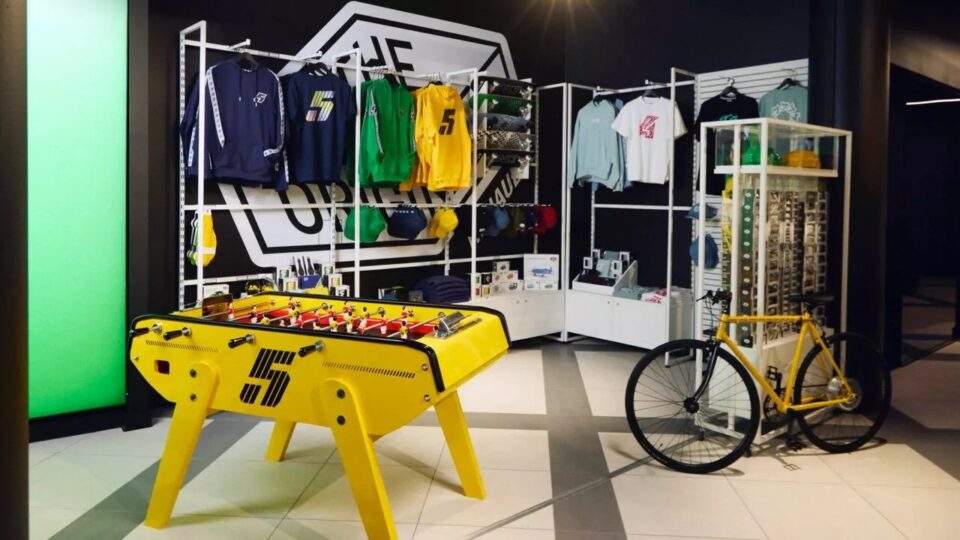The 5 most important new KPIs of retail and how to improve them

Footfall and sales per square foot.
Whenever we talk to our retail clients about their plans for a new store or revamp of an existing space, they always hyper-focus on these two key performance indicators (KPIs).
This makes perfect sense. They are two important measures of how well your retail business is doing after all.
The problem is they’re not the most important measures for today’s retail world.
They’re not even the most crucial for retail stores. To focus only on them is to overlook the fact that things other than the number of people who come into a store impact the sales made. The online and the offline can no longer be separated.
While footfall and sales per square foot still have their place, retail needs a wider set of KPIs that measure how people are actually shopping and discovering and interacting. Without the right KPIs, you won’t know if you’re on track to achieve your business objectives.
Below are 5 of the most important new KPIs you need to be tracking and how to improve them:
KPI 1 – Conversion rate
This one should be a given but it’s surprising how often retailers fail to track conversions correctly. Yet, this metric is only becoming more and more important due to the sheer number of ways customers can now discover, engage with and buy from you.
Fundamentally your conversion rate measures how many customers who come into your store or onto your website actually make a purchase.
If you’re getting a lot of traffic but a small number of conversions, then it’s clear that something is wrong in your approach.
How to improve it:
• Identify key elements that impact conversions such as products being out of stock.
• Identify ways to solve those issues such as placing an online order for an in-store customer or offering store collection for an ecommerce one.
• Build relationships with customers through multiple channels. This is particularly important for getting repeat customers.
• Focus on being helpful rather than ‘salesy’. That means no pushy staff members or constant pop-ups.
• Make sure you are providing customers with the information they need to convert.
• Minimise the number of steps it takes to make a purchase.
• If one store location has a higher conversion rate than others look at whether that store is doing anything different that could be rolled out across your portfolio.

KPI 2 – Online to offline engagement (and vice versa)
The reality of modern retailing is that it’s not a one-channel business. There’s a huge amount of crossover between online and offline channels. This impacts customer relationships and sales as it makes it hard to attribute either to a single channel.
It may be that a customer follows you on social media long before they buy anything. Or they may research a product on your website before going in-store. Equally, they may go to a store to interact with a product in person but then follow up online.
As such, it’s vital that you track these online to offline and offline to online engagements as much as possible. It might be that you look at your ecommerce sales and see how many come from places where you have a physical store. This is a great measure to track when you open a new store or pop-up as you can see if the store drives an uptick in ecommerce.
We’ve also seen retailers who use digital tools to track if in-store customers are already engaged with the brand online and if online customers engage via social media after visiting.
While you could argue that it doesn’t matter where a sale comes from, gaining insight into where your customers come from can only help you. It means you can understand customer journeys better and if there are barriers preventing online customers from coming into the store and vice versa.
Equally, with it reportedly taking 7 brand interactions before a customer buys you really want to be connecting with them via as many channels as possible.
How to improve it
• Use tech in-store to collect customer email addresses to follow up after a visit. This is best done via useful customer service like emailing a wish list.
• Run localised promotional campaigns online in areas with physical stores or before opening a pop-up.
• Use customer surveys to gather insights such as whether customers follow you online or will be likely to do so after a store visit.
• Explore using online RSVPs and appointment bookings for events and services. This way you can see if those online fans carry through to offline.

KPI 3 – Return rate
Do you know how many of the sales you make actually remain sales – ie the customer doesn’t return them?
If this isn’t a KPI already it should be.
You’ll be well aware of the returns challenge the retail industry is experiencing. In the case of online shopping in particular, a sale does not necessarily stay a sale. Returns are rife and with that comes increased costs and resources.
By tracking how many sales you make versus how many returns you get you can start to get a sense of how many transactions stick. Measuring your return rate will also help you identify potential issues with a specific product or service.
How to improve it?
• Provide customers with the tools to make an informed decision as much as possible. This includes everything from photos and video to accurate product descriptions to size guides.
• Consider using personalisation to steer customers towards products that they are likely to love and want to keep.
• Offer customers support with their buying purchases. This includes trained in-store staff but also chatbots and even the ability for online shoppers to connect with store staff for live advice.
• Identify key indicators of potential returns such as multiple sizes of a single product in one order or multiple colourways. Can you create a dialogue with the customer around this? For example, offering a chat with staff to identify the correct size.
KPI 4 – Dwell time
This KPI tracks how much time a customer spends in your store or on your website. The general consensus is that more time means a greater chance of a sale, so a high dwell rate is usually the end goal.
In some cases, you may actually want dwell time to be as low as possible. An example of this would be Starbucks Pickup. These spaces are designed for a high turnover of orders by offering a quick buying experience. The longer a customer is in the space the more likely there is to be an issue with queues, orders backing up, and/or a negative customer experience.
It’s therefore important that you look at what you are trying to achieve with each sales channel to determine whether you want the dwell time to be high or low. It may even vary from store to store if you have different models or offerings across your portfolio.
How to improve it
• Walk through your store or website with fresh eyes. Is it easy to understand where to go to find things? Are there any barriers that you can remove or improve? Is it a nice experience?
• Add services. This could be anything from personal shopping to an online clothing size calculator to the ability to order ahead of time.
• Identify any holes in your user experience and find ways to make it more seamless/enjoyable.
• Offer related content such as blog posts, videos, tutorials, inspirational pictures, and social media Q&As.
• Offer experiences (if appropriate). These can be digital (like AR/VR content) or physical (like photo spots, makeovers).

KPI 5 – Staff happiness
Your staff can have a huge influence on sales. Everything from the way they greet a customer to their ability to answer questions can help to turn a browser into a buyer. As such, staff KPIs tend to focus on sales per employee.
However, savvy retailers have realised that a big part of a staff member’s performance is how happy they are. You should want your staff to be happy in their day-to-day job.
A happy employee is more likely to bring their best self to work. This includes being more enthusiastic and engaged, better educated about products and services, and creating a better experience for customers. You only have to look at a Lush store to see this in action.
The happier your employees are the more connected they will feel to your business. This means they care about its success and may be more loyal. It’s one thing to recruit good staff and another to keep them.
How to improve it
• Create ways for staff to feedback on how they’re feeling or any issues they’re having. We’ve seen retailers have success with employee apps that allow for mood reporting.
• Invest in staff training.
• Arm staff with the tools they need to do their jobs well such as devices for assisting customers.
• Recruit the best possible staff. Some retailers use social media to recruit existing fans of their brand.
• Develop policies that help protect and empower staff.
Conclusion
There are hundreds of potential KPIs, and every retail business is different. It’s important therefore that you’re not trying to track every possible metric but are tracking the ones that make sense for your business.
If you’re not sure where to start though, conversion rate, return rate, dwell time, and staff happiness hold value for everyone. By measuring your performance in these areas, you can see where you’re doing well and where you need to improve.
Are you ready to start improving your performance? Get free recommendations from our expert retail consultants today.



